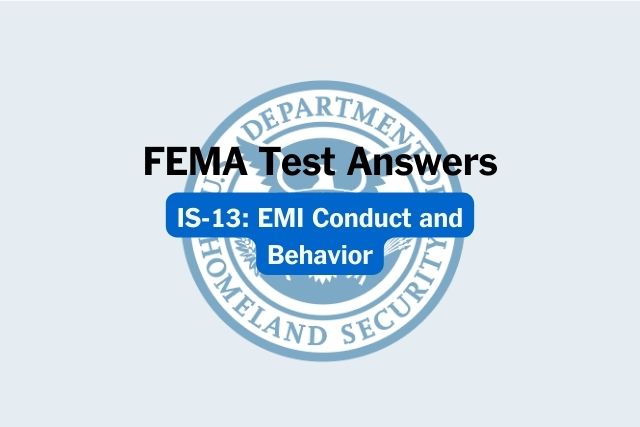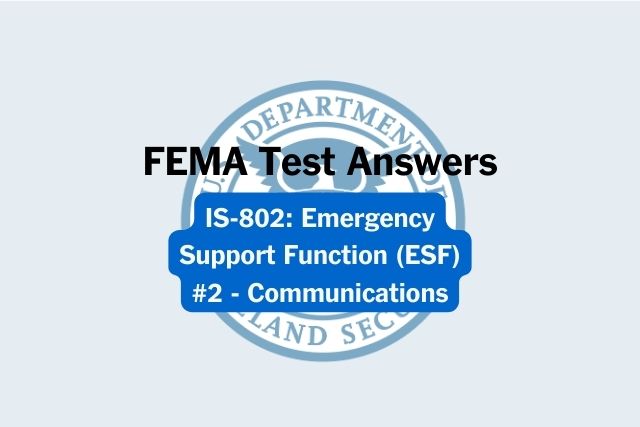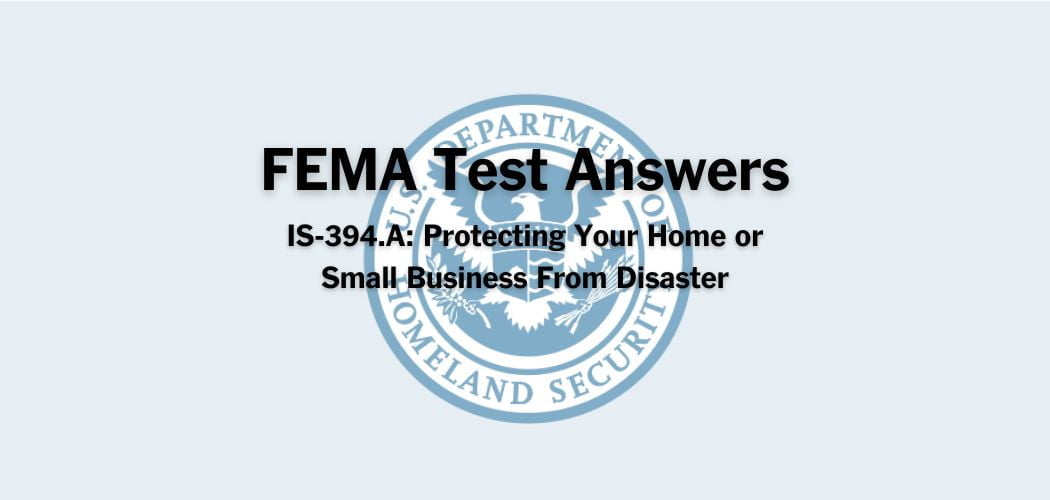Overview: The new FEMA IS-21 course was last updated on January 4, 2024 to provide an orientation to civil rights, including the laws that govern civil rights and strategies that will help FEMA employees protect the civil rights of those they serve.
Primary audience: FEMA IS-21 is for all FEMA employees every calendar year for 2 years, then every other year. By the end of this course, participants will be able to: identify the purpose of the FEMA Civil Rights program and the protections it offers and identify strategies to ensure the civil rights of FEMA customers.
FEMA IS-21 test answers
Each time this test is loaded, you will receive a unique set of questions and answers. The test questions are scrambled to protect the integrity of the exam.
Question 1. The Fair Housing Act of 1968 prohibits housing discrimination:
A. Only in housing intended for long-term residence.
B. In all types of housing regardless of funding.✅
C. In all housing except disaster-related temporary housing.
D. Only in housing paid for with Federal funds.
Question 2. Under the laws that protect civil rights, which of the following actions is acceptable?
A. Change established application procedures to accommodate an individual with a disability.✅
B. Provide information and services for non-English-speaking applicants in a separate facility.
C. Require proof of citizenship before distributing emergency food and water supplies.
D. Schedule home inspections based on relative home values in the neighborhoods.
Question 3. An effective way to help ensure that funding decisions are fair to all segments of the community is to:
A. Vary the experience requirements for different applicants to even the playing field for disadvantaged groups.
B. Offer non-competitive pricing to applicants from underserved populations.
C. Advertise hiring and contracting opportunities only to selected companies.
D. Notify community organizations such as minority, ethnic, disability, and other advocacy groups of grant opportunities.✅
Question 4. All of the following are true statements EXCEPT:
A. Providing information in alternative formats helps ensure that persons with disabilities can access the information.
B. It is acceptable to house a disaster-related program in a non-accessible building if no accessible buildings are readily available.✅
C. One way to provide all socioeconomic groups access to a facility is to situate the facility in a central location on a major public transportation route.
D. The content of all public meetings must be available to individuals with hearing impairments.
Question 5. Which law authorizes Federal assistance in Presidentially declared disasters and prohibits discrimination during disaster relief and assistance activities?
A. Civil Rights Act (1964), as amended.
B. Stafford Act (1988), as amended.✅
C. Americans with Disabilities Amendment Act (2008).
D. Rehabilitation Act (1973).
Question 6. A Federally assisted disaster relief program is trying to streamline its services and provide one-stop shopping for residents with special needs. As part of this effort, program planners decide to coordinate all “special” services, such as language interpreters, sign language interpreters, and readers for the visually impaired, at a single facility at the edge of town. Individuals who require these services must therefore travel farther than other residents. Providing services in this way:
A. Is discriminatory because it serves persons with disabilities and limited English proficiency in a different manner than the rest of the population.
B. Is a good strategy because it improves overall services and provides needed services to persons with special needs.
C. Is acceptable because there is no intent to discriminate.
D. Is permissible only if the facility is located on a major public transportation route.✅
Question 7. If you feel something you have said or done may be perceived as a civil rights violation, the best approach is to:
A. Wait to see if a complaint is filed before raising an issue.
B. Discuss the matter with your supervisor or Equal Rights Officer immediately.✅
C. Record the facts and maintain them in your records so you’ll be prepared if an issue is raised.
D. If you were doing your best to help the individual, forget about it and move on.
Question 8. Title VI of the Civil Rights Act prohibits discrimination based on race. It also prohibits discrimination based on:
A. Sexual orientation and familial status.
B. Religion and sex.
C. Disability and age.
D. Color and national origin.✅
Question 9. Which of the following is a TRUE statement?
A. Modifying rules, policies, practices, and procedures for providing services to persons with disabilities is a form of discrimination.
B. People with disabilities may be charged to cover the costs of measures taken to ensure equal access and non-discriminatory treatment.
C. Emergency programs, services, and activities for individuals with disabilities typically must be provided in an integrated setting.✅
D. Information provided to individuals with sensory impairments need only cover the main concepts of information provided to the general public, without the detail.
Question 10. Under the Age Discrimination Act of 1975:
A. Programs receiving Federal assistance may not provide different or lesser services based on age.✅
B. Federal entities providing disaster assistance may not consider age in employment decisions.
C. Protections against age discrimination apply only to individuals over 40 years of age.
D. Age discrimination is prohibited in any program regardless of funding.
Other recurring FEMA courses
These courses currently have a “calendar-year” extension to allow FEMA staff to retake the course as a recurring requirement.
- IS-18.24: FEMA EEO Employee Course 2024
- IS-19.24: FEMA EEO Supervisor Course 2024
- IS-20.24: Diversity Awareness Course 2024
- IS-35.24: FEMA Safety Orientation 2024
- IS-37.24: Managerial Safety and Health
- IS-107.24: FEMA Travel Rules and Regulations 2024
- IS-246.24: Implementing the Federal Priorities and Allocations System (FPAS)



